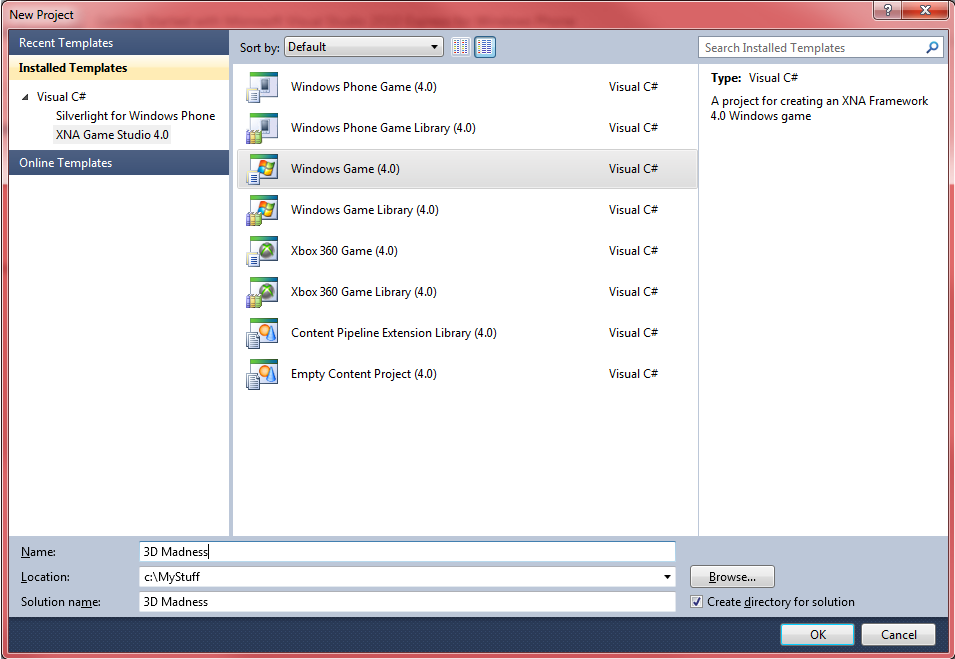Chapter 9. 3D Game Development
As you have seen throughout this book, there are a lot of really cool things that you can do with 2D graphics in XNA. However, given the strength of today’s graphics cards and processors, recently there have been huge advancements in the area of 3D graphics. Load up any of the latest first-person shooters and, as long as you have the hardware to support it, you’ll be amazed at the level of detail in the game and the number of objects flying around the screen at any given time. 3D graphics truly are the way of the future, and if you want to do serious game development, they’re probably where you’ll want to focus most of your time and attention.
So, let’s get started. Because 2D and 3D graphics are treated so differently in XNA, go ahead and create a new project from scratch for this section. Open Visual Studio and select File→New→Project. When the New Project window appears, select Visual C#→XNA Game Studio 4.0 in the menu tree on the left side of the window, and then select Windows Game 4.0 for the template on the right side of the window. Name your project 3D Madness, choose the location for the project, and click OK (see Figure 9-1).

Now that you’ve created your project and you’re ready to go, let’s look at some of the key differences between 2D and 3D game programming in XNA.
Coordinate Systems
Get Learning XNA 4.0 now with the O’Reilly learning platform.
O’Reilly members experience books, live events, courses curated by job role, and more from O’Reilly and nearly 200 top publishers.

